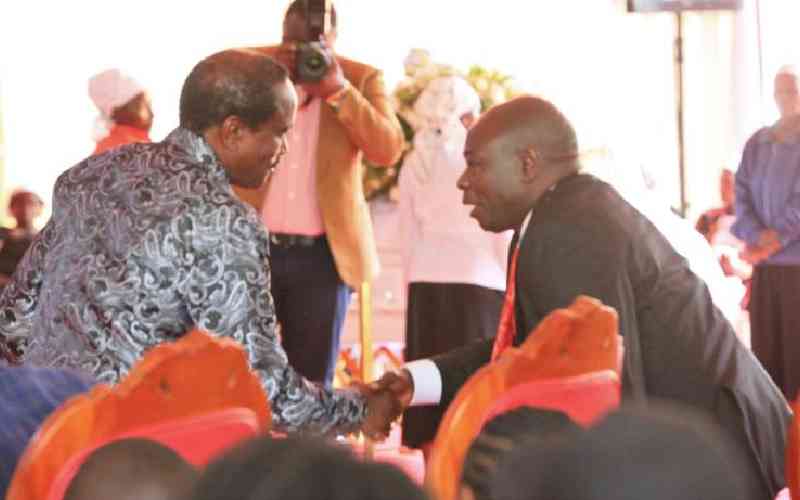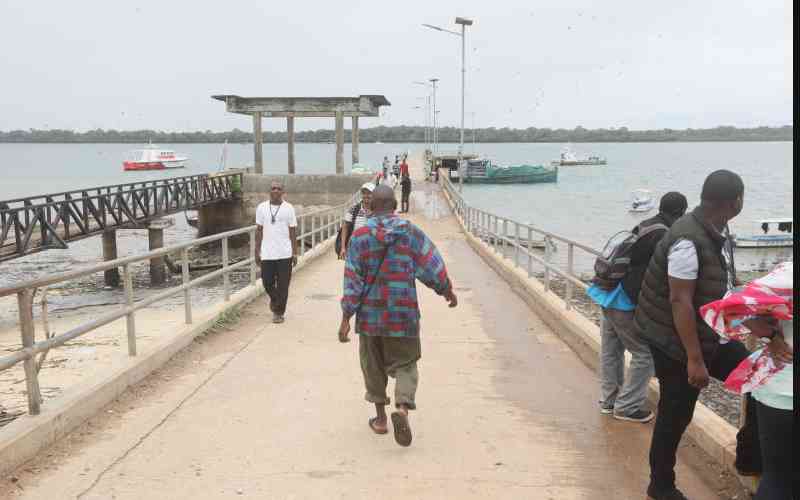By BOAZ KIPNGENO
KENYA: The death of Theodore L Powys, a European rancher at a Pinguan farm in Laikipia, on December 19, 1931 marked the beginning of a colonial strategy to enter and occupy Samburu land.
The British colonialists worked out a strategy to penetrate the vast fertile land and set up white settlements, squeezing the natives and pushing them to the interior parts of Samburu.
This left the family of Bari Kaldojan Ole-aduma (Leaduma), a little known freedom hero who was then the Laibon of the Samburu, heartbroken.
Ole-aduma is said to have been a powerful Laibon from the Lorokushu clan of the Samburu, with super natural powers similar to Koitalel arap Samoei’s. He was a feared Laibon accused of instigating all kinds of murders in the larger Samburu through the morans and protecting them from being discovered. The white settlers in Laikipia wanted him out of their way.
According to top secret letters and other legal correspondences related to the trial and arrests of Ole-aduma exchanged between the colonial leaders of the then Kenya Protectorate of British Colony dated 1930s, the Laibon was unlawfully deported and possibly executed.
Political prisoner
The British ensured that Ole-aduma was incriminated and held liable for the death of Powys.
Although the initial police inquiry revealed that Powys’ death was a result of an accident, another inquiry was opened two years later in 1933 to link the Laibon to the death and ensure a conviction is secured.
In November 25, 1933, WW Trafford, the then Samburu District Commissioner, wrote a letter to HE Welby, the then Rift Valley PC, asking for the immediate arrest of Ole-aduma, saying it was an essential preliminary to a thorough investigation of Powys’ killing.
“He might be arrested on charge of abetting a murder or as a political prisoner,” reads the letter in part.
Trafford describes the Laibon as an elder who never appears before a white man and who natives of all tribes are afraid of. The DC accussed the Laibon of bragging that he had powers over the government.
The letter in part reads, “...If this action is approved, I consider Ole-aduma should be restrained at a place as distant as possible from Rumuruti-Samburu. I suggest Mombasa.”
Mr Welby, upon receipt of the letter, directed for a new inquiry to be conducted in Samburu in November 27, 1933. Ole-aduma was arrested and charged under witchcraft ordinance with the consideration that no information would be forthcoming while the Laibon was still at large in the Reserve.
Murder charges
Stay informed. Subscribe to our newsletter
On December 6, 1933 WK Horne, a judge of the Supreme Court of Kenya, ordered Trafford to arrest and deport the Laibon.
The letter reads, “…AND WHEREAS the court is satisfied that there are grounds to believe that the murders which have lately occurred on the farms in the Laikipia District and Nanyuki area close to the Samburu border have been committed by a band of morans controlled by the said Laibon Ole-aduma... it appears to this court that the further presence of the said Laibon in Samburu District is undesirable THEREFORE YOU ARE HEREBY COMMANDED IN HIS MAJESTY’S NAME forthwith to apprehend the said Laibon and to bring him before this Court to show cause why a recommendation for his deportation should not be made to His Excellency the Governor.”
The deportation order was then issued on February 15, 1934 and Laibon Ole-aduma was removed from Samburu and taken for detention in Kwale.
In a letter dated November 1934, the then Governor of the Kenya protectorate Brigadier General Joseph Aloysius Byrne issued an order for the Laibon to be taken to Nakuru to face murder charges and be reconvened to Kwale.
Another confidential letter dated February 14, 1935 written by then Attorney General W Harragin to the Rift Valley PC Welby, criticises the reopening of the case, admitting dishonesty among government officials.
Harragin also cautions the PC not to act on the interest of the parties but advised that further action be taken if the settlers’ fears can be borne out by reliable evidence.
[email protected]
 The Standard Group Plc is a
multi-media organization with investments in media platforms spanning newspaper
print operations, television, radio broadcasting, digital and online services. The
Standard Group is recognized as a leading multi-media house in Kenya with a key
influence in matters of national and international interest.
The Standard Group Plc is a
multi-media organization with investments in media platforms spanning newspaper
print operations, television, radio broadcasting, digital and online services. The
Standard Group is recognized as a leading multi-media house in Kenya with a key
influence in matters of national and international interest.
 The Standard Group Plc is a
multi-media organization with investments in media platforms spanning newspaper
print operations, television, radio broadcasting, digital and online services. The
Standard Group is recognized as a leading multi-media house in Kenya with a key
influence in matters of national and international interest.
The Standard Group Plc is a
multi-media organization with investments in media platforms spanning newspaper
print operations, television, radio broadcasting, digital and online services. The
Standard Group is recognized as a leading multi-media house in Kenya with a key
influence in matters of national and international interest.





